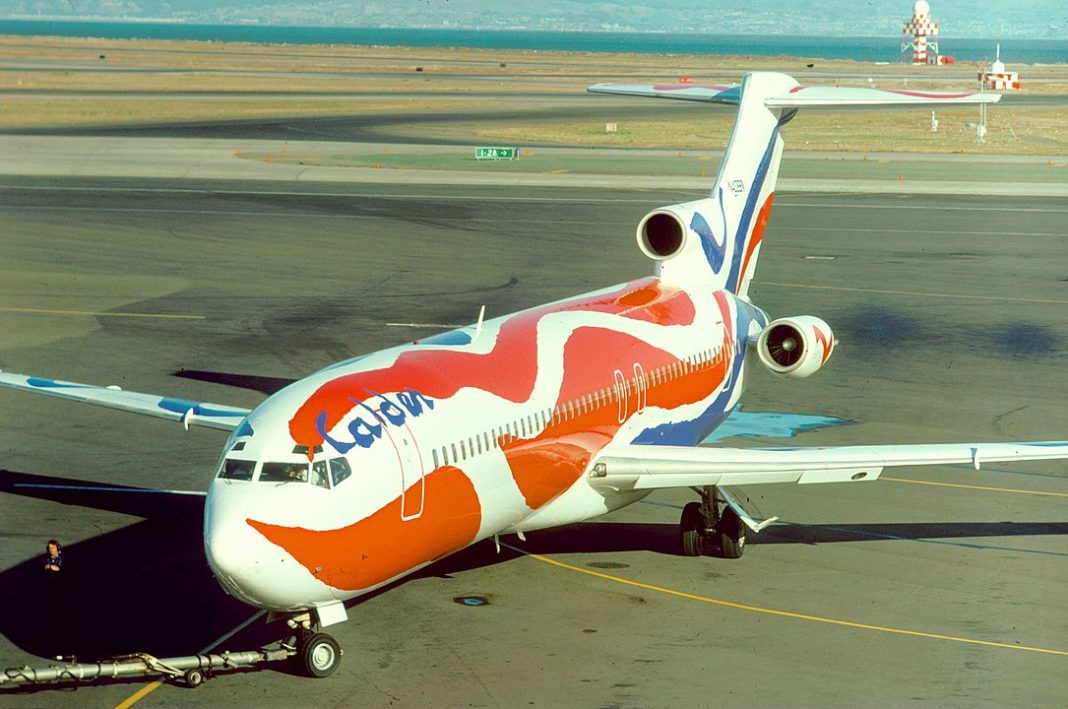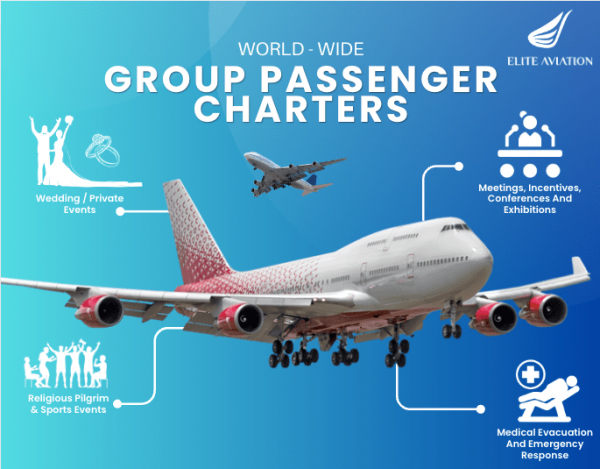[ad_1]
Before it lit up the big screen in a fiery explosion, a now-famous Boeing 727 movie prop had a much more patriotic purpose.
Originally painted by American artist Alexander Calder to celebrate the United States Bicentennial in 1976, this aircraft—registered as N408BN—was once a flying piece of art for Braniff International Airways.
Its transformation from an airborne tribute to a Hollywood icon is one of aviation’s most unexpected plot twists.
Here’s a brief history of Calder’s special-edition aircraft.
Braniff’s Artistic Aspirations
Braniff International Airways (BIA) was an airline founded in Dallas, Texas, that served travelers worldwide for over five decades. The airline even leased a Concorde briefly for domestic operations before closing its doors in 1982.
During the 1970s, Braniff introduced a more modern fleet and embraced eye-catching design. Aircraft donned striking two-tone schemes using vivid blues, greens, and oranges, paired with yellow or light-blue underbellies.
The dramatic style shift was driven by Chairman Harding Lawrence and Mary Wells, an advertising executive who later became his wife.

But the carrier’s creative vision didn’t stop there. In 1973, advertising executive George Stanley Gordon elevated the idea further by commissioning artist Alexander Calder to create an entirely hand-painted livery. The result was Flying Colors of South America, a vibrant Douglas DC-8 featuring streaks, waves, and other accents in bold primary colors.
The aircraft commemorated Braniff’s 25 years of service to South American cities and was used exclusively on routes between North and South America.
A Star-Spangled Boeing
In 1975, two years after his first airline collaboration, Alexander Calder was again commissioned by George Stanley Gordon—this time to celebrate America’s upcoming 1976 Bicentennial. The result was Flying Colors of the United States, a striking red, white, and blue design hand-painted onto a Boeing 727-200.
The aircraft was delivered new to Frontier in 1968 and later sold to Braniff in 1972. Prior to Calder’s work, it wore a solid blue Braniff livery. Calder’s patriotic version featured flowing ribbons and swirls in red and blue on a predominantly white background.
The aircraft debuted its new livery during a company event at Dallas Love Field and was later used primarily for routes between the United States and Mexico.
Unfortunately, the special edition livery was short-lived. Once the Bicentennial festivities concluded, Braniff repainted N408BN in a solid color once again — this time, in ‘chocolate brown.’
Flying Colors of the United States was the last special-edition livery commissioned from Braniff. Calder unfortunately died from a heart attack on 12 November 1976 in his daughter’s home in New York City. He was 78.
Life After Braniff and the Journey to an Iconic Boeing 727 Movie Prop
N408BN remained in Braniff’s fleet until the airline ceased operations in May 1982. The aircraft sat in storage until the launch of Braniff II in 1984 when it was repainted in the new airline’s white and blue livery.
In 1985, N408BN was sold to Pride Air and eventually passed through the hands of several smaller domestic and international carriers. Its flying career came to an end in June 1990, when it was retired in Opa-locka, Florida. The aircraft was dismantled, and its parts were sold by International Air Leases.
But N408BN had one last moment in the spotlight.
In 1993, the aircraft was sold to Columbia Pictures for the climactic final scene of Bad Boys, starring Will Smith and Martin Lawrence.
The film’s villain, Fouchet (played by Tchéky Karyo), attempts to flee aboard the jet until the film’s heroes blow up the hangar (and the aircraft). N408BN’s registration is clearly visible throughout the scene, which was filmed at Miami-Opa Locka Executive Airport (OPF).
Australian photographer Frank Schaefer took the last known photo of N408BN in March 1993, shortly before production of Bad Boys began:
‘Sad end, but at least with a bit of fame,’ Schaefer wrote.
[ad_2]
Source link


